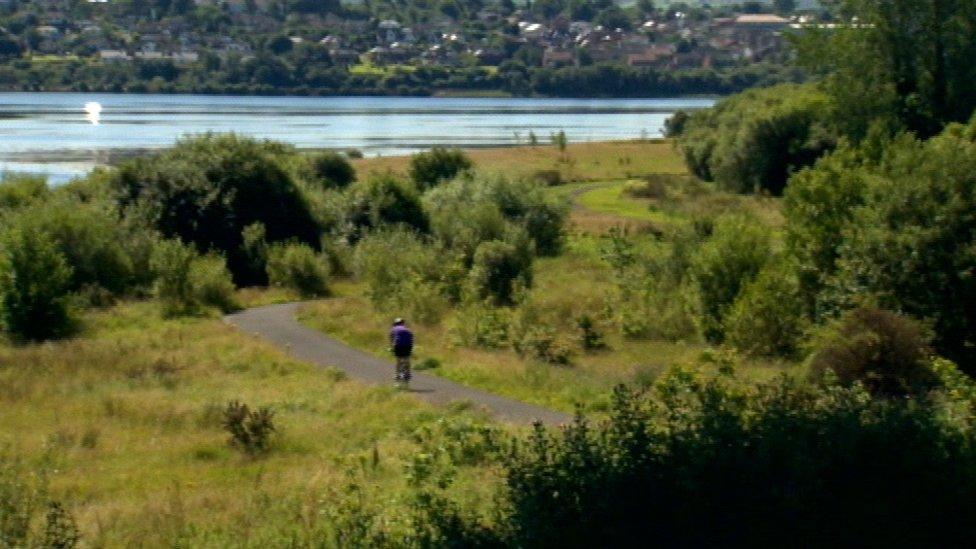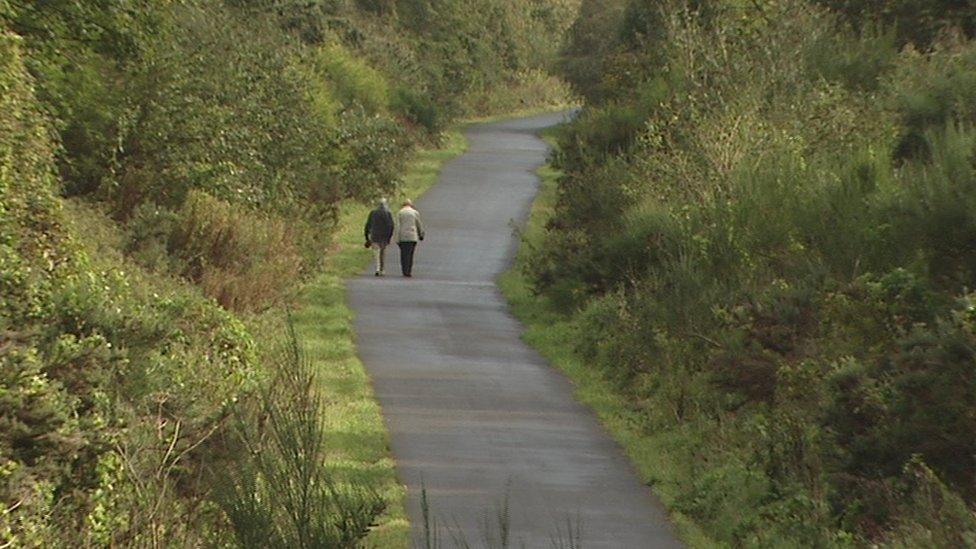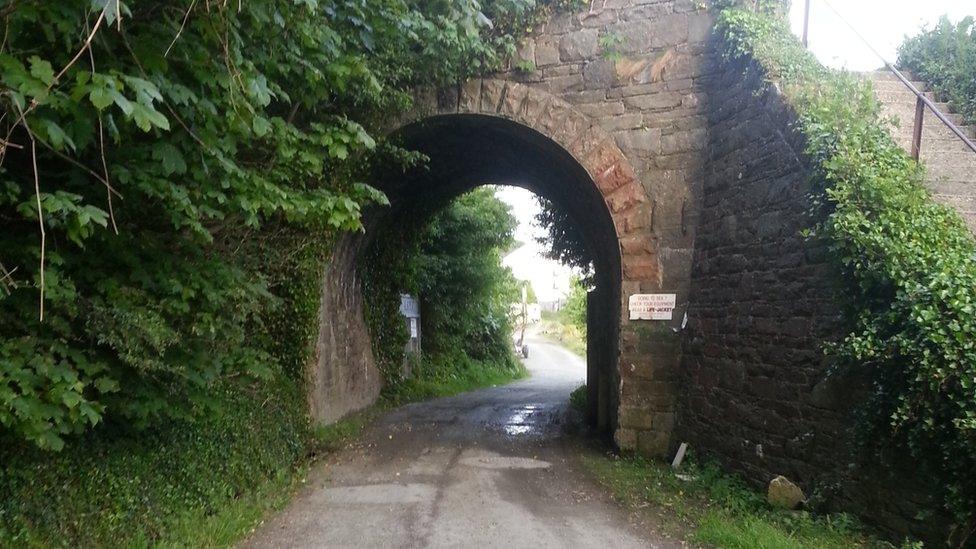NI greenways: 600-mile network could get Stormont green light
- Published

The Foyle Valley Cycle Route could be incorporated into a Northern Ireland greenway network
It seems like a pipe dream. Or, perhaps, an ambitious project one wheel short of the full bicycle.
But, a proposal to build a 600-mile network of uninterrupted pathway through Northern Ireland's rural landscape could be about to hit the road to reality.
The plan would allow for the construction of a greenway network, connecting major cities and minor towns, over a 25-year period.
Five greenways, traffic-free paths used largely by cyclists and walkers, already exist in Northern Ireland, including the Comber Greenway and Foyle Valley Cycle Route.
However, these paths are just a small fraction of the network that could grow to incorporate miles of greenway and several cross-border routes.
It is an ambitious plan but one that Stormont may be about to back.
The Department of Infrastructure is due to publish a strategic greenway plan this autumn. It could pave the way for the development of a greenway network across Northern Ireland.
On Wednesday, officials from the department appeared before the infrastructure committee at Stormont to brief them on the plan's development.

While the contents and scope of the plan are unknown, it is hoped it will endorse the development of a greenway network along Northern Ireland's disused railway network.
Already, the wheels are in motion on some local greenway projects.
On Monday, a committee at Armagh City, Banbridge and Craigavon Borough Council recommended the approval of 190,000 euros (£162,000) for a greenway linking Middletown, County Armagh to Monaghan in the Republic of Ireland.
It is believed this project could eventually lead to Belfast via a greenway through Portadown and Lisburn.
Derry City Council and Donegal County Council are working on a project that would see Londonderry linked to Buncrana and Carndonagh in Inishowen through a project known as the 'Wee Greenway'.
In County Antrim, plans are in place for two greenways - one a 'Glens of Antrim Greenway' linking Ballymena and Cushendall.

The existing Comber Greenway stretches seven miles along the old Belfast to Comber railway line
The hope is that the department's strategic plan will help draw these small, local projects into one overall network.
Jonathan Hobbs set up NI Greenways, external about four years ago to campaign for the network.
According to him, the plan does not require starting from scratch with new infrastructure - not when Northern Ireland's disused railway lines lie dormant.
"These routes are mostly rural, it goes through towns and villages," he said.
Beneficial
There are some concerns though from railway campaigners that the construction of greenways on these disused tracks might rule out the chances of those lines eventually being reopened for their original purpose.
However, Mr Hobbs said the greenway plan would benefit tourism and locals.
"Tourism is a major part of our economy. It's something we can really sell. The greenway network would let travellers access Northern Ireland and the Republic.
"It's a popular type of holiday for millions of people in Europe. These people would see Ireland as an attractive destination for a cycling holiday."
According to Mr Hobbs the full network would cost an estimated £200m to build.
"It sounds like a lot of money, and it is, but when you think that it is over a 25-year period, you're talking about a positive infrastructure investment," he said.
He points towards the success of the 26-mile long Great Western Greenway, external in County Mayo as an example of what can be gained.

The Old Railway Arch, Fahan, County Donegal, that could be incorporated into the proposed 'Wee Greenway'
The greenway fully opened in 2011 at a cost of 5.7m euros (£4.8m) - it was estimated, external that it was worth 7.2m euros (£6.1m) to the local economy in the first year alone.
For others, greenways are more about getting local people out of cars and onto bikes.
"There are people who will cycle and there are people who won't," said Ronan Gallagher, a campaigner for the 'Wee Greenway' linking Derry and County Donegal.
"People who won't cycle are the people we need to get on bikes. Segregated greenways is the only way to get into that market.
'Question marks'
"We believe 13,000 school children are served by the proposed greenway route. Think of the pressure local services are under and how that would help relieve that pressure."
Like the NI Greenways plan, the 'Wee Greenway' takes advantage of County Donegal's old railway routes and is estimated to cost about £15m (17.59m euros).
It is understood the project is earmarked for several million pounds of EU funding.
"We believe the money will be confirmed in the next couple of weeks," Mr Gallagher said. "We think it will be 14m euros (£11.9m). There will obviously be conditions and there are question marks over Brexit. But, it's still a boost for the project."
Meanwhile, Mr Hobbs is also optimistic on the prospect of his greenway project getting a seal of approval from Stormont.
"It will take a long time and it is an ambitious plan," he said. "Hopefully, there'll be a pot of funding initially as it would be best to fund an initial one or two projects.
"But I know there has been great enthusiasm from the councils and, if money is made available, it will be make a big difference in the short term."